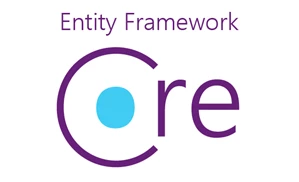ノーコードでクラウド上のデータとの連携を実現。
詳細はこちら →
CData


こんにちは!ウェブ担当の加藤です。マーケ関連のデータ分析や整備もやっています。
Entity Framework はobject-relational mapping フレームワークで、データをオブジェクトとして扱うために使われます。Visual Studio のADO.NET Entity Data Model ウィザードを実行するとEntity Model を作成できますが、このモデルファーストアプローチでは、データソースに変更があった場合やエンティティ操作をより制御したい場合は不都合があります。この記事では、CData ADO.NET Provider を使いコードファーストアプローチでFacebook Ads にアクセスします。
ほとんどのテーブルで、アプリケーション認証と同様にユーザー認証を必要とします。Facebook Ads はユーザー認証にOAuth 標準を使用しています。Facebook への認証には、組み込み認証を使用してブラウザ経由で完結することもできますし、Facebook にアプリを登録することで独自のOAuthClientId、OAuthClientSecret、CallbackURL を取得することもできます。
の設定方法については、ヘルプドキュメントの「OAuth」セクションを参照してください。
任意で以下の項目を設定して、フィルタリングや集計を行うもできます。必要に応じてご利用ください。
<configuration>
... <connectionStrings>
<add name="FacebookAdsContext" connectionString="Offline=False;" providerName="System.Data.CData.FacebookAds" />
</connectionStrings>
<entityFramework>
<providers>
... <provider invariantName="System.Data.CData.FacebookAds" type="System.Data.CData.FacebookAds.FacebookAdsProviderServices, System.Data.CData.FacebookAds.Entities.EF6" />
</providers>
<entityFramework>
</configuration>
</code>
using System.Data.Entity;
using System.Data.Entity.Infrastructure;
using System.Data.Entity.ModelConfiguration.Conventions;
class FacebookAdsContext :DbContext {
public FacebookAdsContext() { }
protected override void OnModelCreating(DbModelBuilder modelBuilder) { // To remove the requests to the Migration History table
Database.SetInitializer<FacebookAdsContext>(null); // To remove the plural names modelBuilder.Conventions.Remove<PluralizingTableNameConvention>();
}
}
using System.Data.Entity.ModelConfiguration;
using System.ComponentModel.DataAnnotations.Schema;
public class AdAccounts {
[DatabaseGeneratedAttribute(DatabaseGeneratedOption.Identity)]
public System.String Id { get; set; }
public System.String AccountId { get; set; }
}
public class AdAccountsMap :EntityTypeConfiguration<AdAccounts> {
public AdAccountsMap() {
this.ToTable("AdAccounts");
this.HasKey(AdAccounts => AdAccounts.Id);
this.Property(AdAccounts => AdAccounts.AccountId);
}
}
public DbSet<AdAccounts> AdAccounts { set; get; }
FacebookAdsContext context = new FacebookAdsContext();
context.Configuration.UseDatabaseNullSemantics = true;
var query = from line in context.AdAccounts select line;